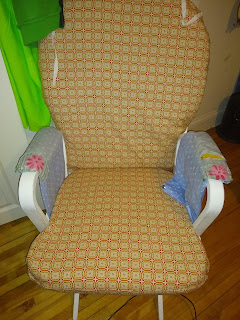I have a sewing project that is languishing. I made a set of curtains for our office closet and I plan to make matching curtains for the office windows, but I can't make myself take the next step, which is to cut the fabric.
However, I have been keeping up with my sustainability kick by taking on small repair projects around the house. Shortly after I started visibly mending, I also became motivated to repair other things. Clear Gorilla Tape became one of my best friends on this quest. However, the tape did not work for everything. Somehow I came across a product called Sugru on the internet. I then saw a package at my local Target store, which I picked up and looked at, but didn't purchase. Then finally I decided it was time to try it out on these repairs that were piling up. By that time, the local Target no longer carried it and I had to order it from Amazon and it arrived two days later, with too much packaging.
On the day I received the Sugru, I took out a few things that needed repair. This included a broken tea strainer and a set of swim goggles that I now use when chopping onions. In addition, I had a sugar bowl that had no place to conveniently stow the sugar spoon. I also had a set of headphones that were in two pieces suspended by a wire.
The first I thing I did was to create a little holder for the sugar spoon. That worked out just as envisioned and now I have a place for the sugar spoon.
Then I worked on the tea strainer. I left it on the counter to cure and my spouse moved it, which meant it ended up back in two pieces again. I opened a second packet to redo the strainer. After it cured, I realized it was still not stable enough so I added more. I haven't really put it to the test, but it looks like it will work for a while.
The goggle rims had a little tear on them. I wasn't able to get the Sugru to mold as I wanted on there, but since I am not using them in water it is ok.
In addition to these items, I also repaired a broken umbrella. I also started to repair a cracked plastic chair. I will need to open another packet to finish that. While my blog is generally not about buying more stuff, I did find Sugru to be useful to extending the life of several things.




















































%20v3.png)
%20v3.png)
